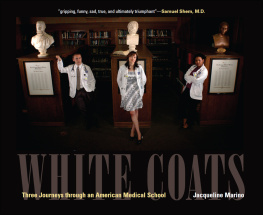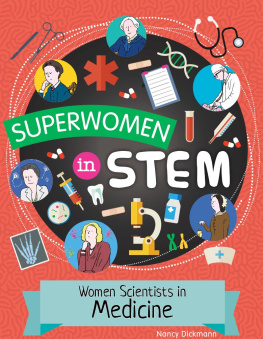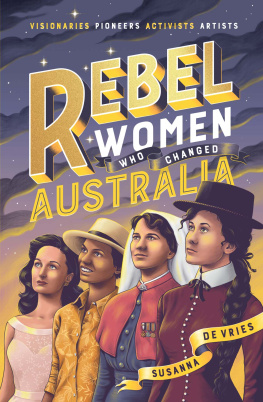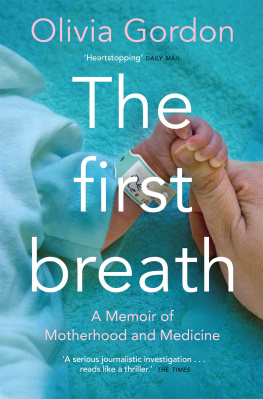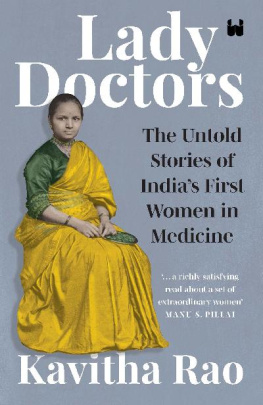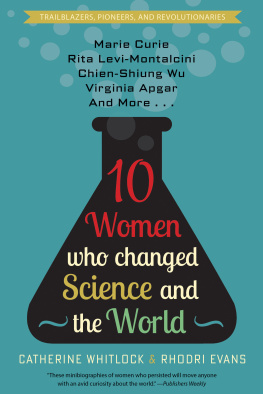Olivia Campbell - Women in White Coats: How the First Women Doctors Changed the World of Medicine
Here you can read online Olivia Campbell - Women in White Coats: How the First Women Doctors Changed the World of Medicine full text of the book (entire story) in english for free. Download pdf and epub, get meaning, cover and reviews about this ebook. year: 2021, publisher: Park Row, genre: Non-fiction. Description of the work, (preface) as well as reviews are available. Best literature library LitArk.com created for fans of good reading and offers a wide selection of genres:
Romance novel
Science fiction
Adventure
Detective
Science
History
Home and family
Prose
Art
Politics
Computer
Non-fiction
Religion
Business
Children
Humor
Choose a favorite category and find really read worthwhile books. Enjoy immersion in the world of imagination, feel the emotions of the characters or learn something new for yourself, make an fascinating discovery.

- Book:Women in White Coats: How the First Women Doctors Changed the World of Medicine
- Author:
- Publisher:Park Row
- Genre:
- Year:2021
- Rating:4 / 5
- Favourites:Add to favourites
- Your mark:
- 80
- 1
- 2
- 3
- 4
- 5
Women in White Coats: How the First Women Doctors Changed the World of Medicine: summary, description and annotation
We offer to read an annotation, description, summary or preface (depends on what the author of the book "Women in White Coats: How the First Women Doctors Changed the World of Medicine" wrote himself). If you haven't found the necessary information about the book — write in the comments, we will try to find it.
Olivia Campbell: author's other books
Who wrote Women in White Coats: How the First Women Doctors Changed the World of Medicine? Find out the surname, the name of the author of the book and a list of all author's works by series.
Women in White Coats: How the First Women Doctors Changed the World of Medicine — read online for free the complete book (whole text) full work
Below is the text of the book, divided by pages. System saving the place of the last page read, allows you to conveniently read the book "Women in White Coats: How the First Women Doctors Changed the World of Medicine" online for free, without having to search again every time where you left off. Put a bookmark, and you can go to the page where you finished reading at any time.
Font size:
Interval:
Bookmark:
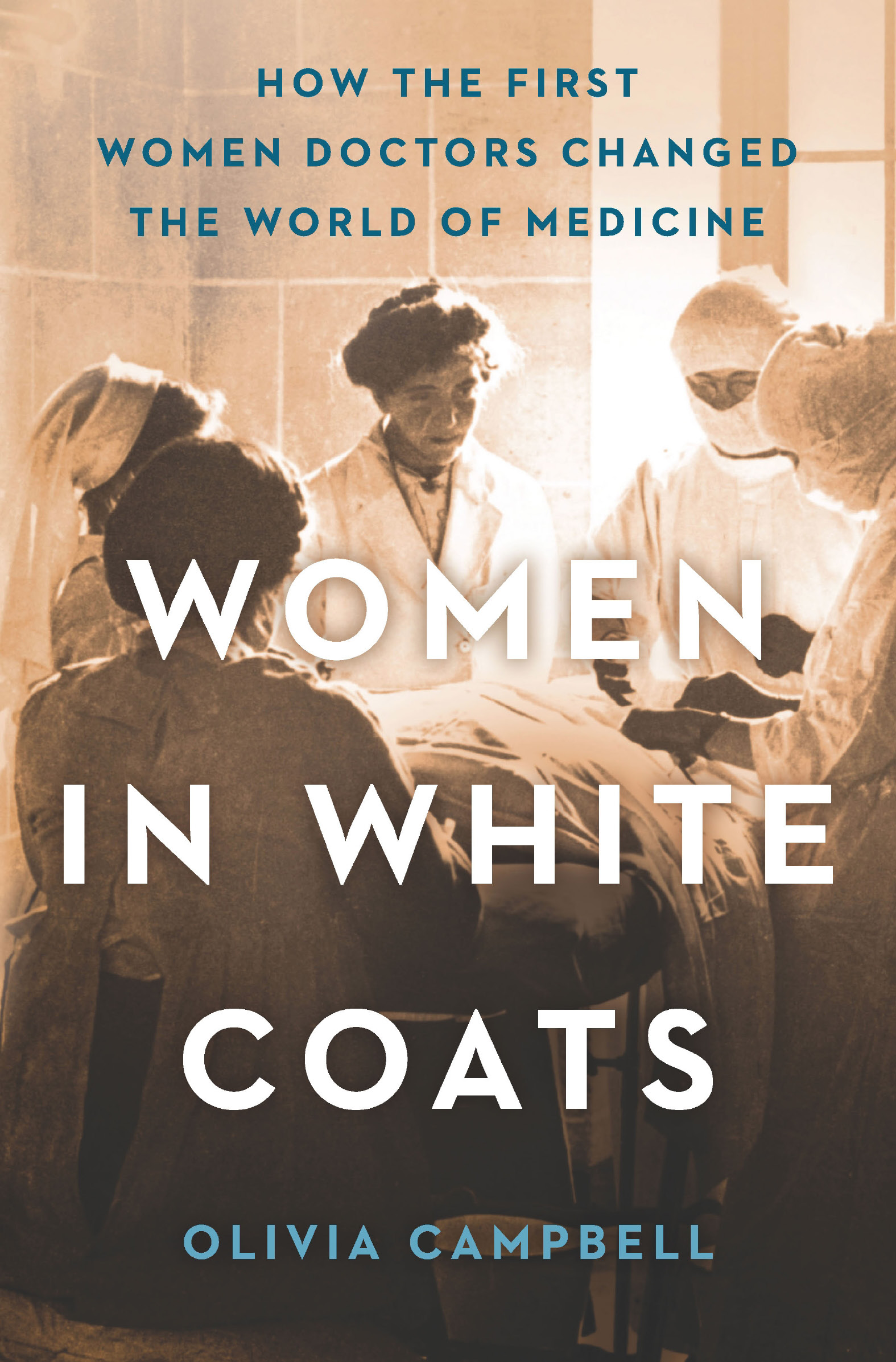
Praise for Women in White Coats
An engrossing portrait of a transformative moment in Victorian medicine, when women doctors demanded the right to heal and be healed. Their battle was collective, and their hard-won triumph is ours. Women in White Coats is a timely reminder of just how many hands it takes to move mountains.
Claire L. Evans, author of Broad Band: The Untold Story of the Women Who Made the Internet
Olivia Campbells Women in White Coats is a lovingly rendered, joyfully expressed history of extraordinary medical women. With a storytellers flair, Campbell chronicles their struggles, setbacks, and stridently hard-won triumphs across decades and continents. I emerged from the book both humbled and inspired.
Rachel Vorona Cote, author of Too Much: How Victorian Constraints Still Bind Women Today
Campbells extensive research and lucid writing about medical matters impress. This entertaining account adds a valuable chapter to the history of women and medicine.
Publishers Weekly
Olivia Campbell is a journalist and author specializing in medicine and women; her work has appeared in The Guardian, the Washington Post, New York Magazine and The Cut, among others. This is her first book.
www.OliviaCampbell.Contently.com
Women in White Coats
HOW THE FIRST WOMEN DOCTORS CHANGED THE WORLD OF MEDICINE
Olivia Campbell

To Mom, Grandma, Laura, Ellen, Louisa, MaryAnn, Lara, Sarah and all of the other ladies in my life who showed me that theres nothing tenacious, independent women cant do.
Contents
When Elizabeth Blackwell decided to become the first woman doctor, in many ways she wasnt actually the first. Women have delivered healthcare across the globe for centuries as herbalists, healer-priestesses, shamans, apothecaries, healers, wise women, witch doctors, diviners, surgeons, nurses, and midwives. But this rich history is largely overlooked, and very few names have weathered the passing of time.
Agnodice is one of the earliest named female physicians in the historical record. The story goes that she became a doctor in the fourth century BCE to save the women of Athens from dying of treatable illnesses because they didnt want to see male physicians. It was illegal for women to be doctors, so Agnodice set up practice disguised as a man. To show her patients who she really was, she flashed her genitalia. Soon, jealous male doctors found out and convicted Agnodice of illegally practicing medicine. In the final dramatic showdown, the women of Athens rushed into the courtroom to defend her and the ban against women physicians was overturned.
Theres only one problem with this tale: there was no law against women practicing medicine in ancient Greece. This inconsistency, paired with the fantastical elements of the story, is enough to convince some scholars that Agnodice didnt exist. Other scholars believe she was a real person, who surely encountered persecution even if she wasnt breaking any official law.
This is how we are introduced to historical medical women: biographies sprinkled with doubts, caveats, clauses; lives methodically dissected under a microscope by scholar after scholar looking for any hint of error, any crumb of fabrication to wave around gleefully as proof that this woman wasnt what we thought. We dont often hear about the historical contributions of womens medical brilliance, but when we do, we are taught to question the very core of such claims. Men rarely enjoy such scrutiny.
A relative scarcity of women officially labeled as professional medical practitioners in historical texts is not because they didnt exist, but rather because their occupations were not labeled as frequently as mens. As wise women healers or midwives, their activities may not have been believed to warrant recording. Throughout much of history, a mans entire household would have been involved in his occupational activities. Spouses and children of physicians or apothecaries would have helped mix medicines, visit the sick, and administer treatments; the family of a barber surgeon helped him pull teeth and set broken bones. And widowed wives took over those family businesses.
Most areas in Europe would have had a wise woman or man who inherited the role of village healer, and women were largely the ones called upon to tend sick or dying family members; the ones sent to care for sick or dying neighbors who had no other family to care for them. As late as the 1500s, King Henry VIII was still granting the occasional medical license to certain women to attend the sick poor who could not afford to pay the fees of regular practitioners. In medieval France, about one hundred women have been identified as medical practitioners (alongside seven thousand men). Nuns soon became the main practitioners of the healing arts; convents could be considered proto-hospitals. Nuns would tend medicinal herb gardens, dress soldiers battle wounds, and nurse ill villagers back to health.
When medicine began to be solidified as a profession during the thirteenth centuryits practice now requiring university training and licensurepatriarchal control swept in. Women could not become official doctors since most universities wouldnt admit them. Outside of England and France, some institutions were more amenable. In 1390, Italian physician Dorotea Bucca took over for her father as chair of medicine at the University of Bologna, a post she held for more than forty years. Still, such women were the exceptions, not the rule.
Professionalization further sidelined women because book learning was now viewed as superior to any wisdom passed down orally, like most of womens folk medicine was.
Womens claims of medical prowess began to be questioned in real time, not by history scholars, but by the womens newly professionalized male contemporaries. Lay women healers were vilified as dangerously incompetent because they lacked a classical education (which they couldnt obtain even if they wanted to). In 1421, English physicians petitioned parliament and King Henry V to request that no women practice medicine under payne of long imprisonment and steep fines, declaring those who tried worthless and presumptuous women who usurped the profession. Women who were found guilty of practicing medicine illegally were excommunicated and fined. Things took a deadly turn when the Church stepped in.
The Church controlled most university medical schools and wanted to ensure they also monopolized its practice. Between 1400 and 1700, the Catholic and Lutheran churches executed a massive campaign to rid Europe of wise women, branding them witches or sorceresseseven the nuns! They reasoned that only through God could a person be healed, and since women werent ordained by Him to wield such powers, their ability to make sick people well must originate from the devil. While the Church claimed it was fighting dark magicnot medicine or womentheir campaign saw more than a hundred thousand women healers burned at the stake.
This legacy of discrimination against women healers cast a wide shadow over the medical profession. Even if women did somehow manage to achieve professional qualifications, they were relegated to specialties deemed feminine: they could deliver healthcare, but only as nurses or midwives.
For Victorian women like Elizabeth Blackwell, Lizzie Garrett, and Sophia Jex-Blake to seek entrance into the male realm of medicine was a radical request to be seen as equals. It meant these women couldnt just be students, they also had to be womens rights activists. If they wished to fully reenter the realm of medicine as doctors, theyd have to put up a hell of a fight.
Next pageFont size:
Interval:
Bookmark:
Similar books «Women in White Coats: How the First Women Doctors Changed the World of Medicine»
Look at similar books to Women in White Coats: How the First Women Doctors Changed the World of Medicine. We have selected literature similar in name and meaning in the hope of providing readers with more options to find new, interesting, not yet read works.
Discussion, reviews of the book Women in White Coats: How the First Women Doctors Changed the World of Medicine and just readers' own opinions. Leave your comments, write what you think about the work, its meaning or the main characters. Specify what exactly you liked and what you didn't like, and why you think so.

